Home » Blog » River Street Jazz Cafe: A Nod to Jazz Clubs in America
February 7, 2020
River Street Jazz Cafe: A Nod to Jazz Clubs in America
Have you wondered how jazz music came to be, right here in NEPA? We took a look at the elements of jazz and some of the most notable clubs in the United States. Check out our music blog for the smooth history of jazz and get ready to get jazzy.
What is Jazz?
At its early beginnings, jazz musicians would lean towards improvisation in the form of solo performances which took an immense amount of skill. Though the genre can vary, most jazz can be categorized as “very rhythmic, has a forward momentum called “swing,” and uses “bent” or “blue” notes.”
Many people who think of jazz music in a historical sense think of the call and response patterns where one singer, instrument or voice may respond to another. While jazz is full of sultry sounds, it can take a listener across the spectrum of emotions from joy to sorrow and everything in between.
It’s important to know that no two musicians play music the same way. In fact, performers would be known for their distinct styles of sound and stage presence.
The Rise of Jazz in the United States
Jazz became increasingly popular in the very early part of the 20th century. In key areas like New Orleans where the population was more diverse, people from Africa, France, The Caribbean, Italy, Germany, Mexico, and those who were American Indian, as well as English, intermingled their own cultural flavors to create a new brand of sound. From this came ragtime, marches and blues music.
Jazz was mostly for dancing, with the first recordings occurring in 1917 according to the National Museum of American History. As it grew in popularity, more musicians’ careers flourished. The stars of the Jazz era like Louis Armstrong, Duke Ellington, Charlie Parker, and Miles Davis took over the music scene.
The Most Historic Clubs
River Street Jazz Cafe may be your favorite music venue in NEPA, but take a look at these historic jazz clubs around the world.
- Village Vanguard: The oldest jazz club in New York City, Village Vanguard is known as “Carnegie Hall of Cool.” Founded by Max Gordon in 1935, it has been the showstopper of the jazz scene in Greenwich Village.
- Little Gem Saloon: The original location of Little Gem Saloon, the 400 block of South Rampart Street in New Orleans, is considered jazz’s true birthplace.
- Andy’s Jazz Club: Originally opened in Chicago in 1951, this club transformed into a jazz venue in 1975 under new ownership. Folk and blues musicians began to perform there, bringing in two live bands a day.
- The Lighthouse Cafe: If you’ve seen the movie “La La Land,” then you’ve seen the Lighthouse Cafe. Jazz musicians began to perform there in 1949, and it became one of the West Coast’s most famous jazz clubs.
- Minton’s Playhouse: Known as the birthplace of bebop, Minton’s Playhouse opened in 1938 in Harlem. Notable names who took the stage include Dizzy Gillespie, Louis Armstrong, and Duke Ellington.
Getting Jazzy
At River Street, we celebrate the sounds of every genre, bringing musicians, fans, and friends together to share in the music and the moment.
Grab a Table at River Street Jazz Cafe to Enjoy Live Music and Great Food
RESERVATIONS ARE HIGHLY RECOMMENDED, AS DINNER TABLES FILL UP FAST! PLEASE NOTE THOUGH, THAT HAVING A TABLE RESERVED DOES NOT MEAN YOU AUTOMATICALLY HAVE A TICKET TO ONE OF OUR SHOWS. YOU STILL NEED TO PURCHASE A TICKET SEPARATELY. CHECK OUT OUR UPCOMING SHOWS AS WELL!
